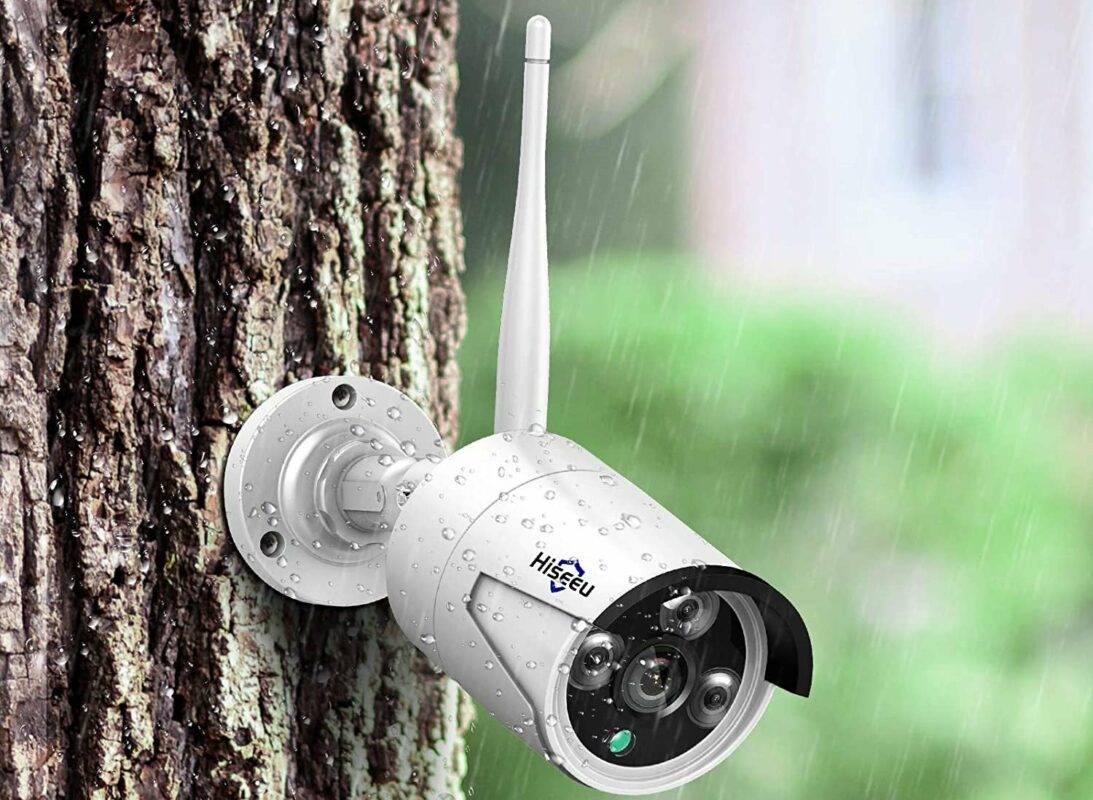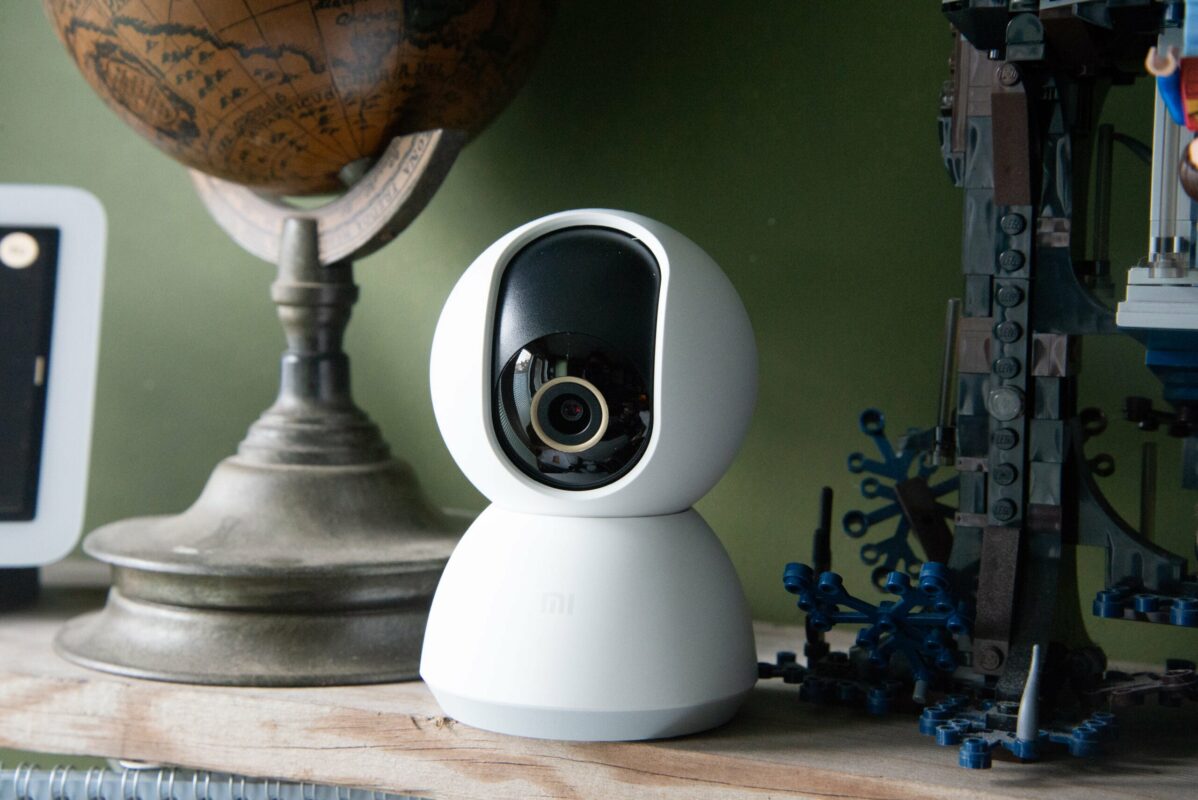Should you opt for a classic surveillance camera or a smart model?
f a few years ago the field of surveillance cameras was relatively small and the interest in this field was limited, it is clear that today we have a vast choice, so much so that it is difficult to meet there.
I therefore very regularly have questions to find out which are the best surveillance cameras. In fact, behind this question often hides the question of opting for a smart camera or a “classic” surveillance camera. Both types have their advantages and disadvantages, which I suggest you discover in more detail.
Classic surveillance cameras
By classic surveillance cameras, I mean here IP cameras, which connect to an Ethernet network, or at least Wifi. If CCTV cameras (analog) still exist, IP cameras are easier to use, and for very affordable prices today. There are indeed models from Hikvision, used in the professional environment, at less than 100€, and offering very good full HD image quality thanks to 4Mp sensors for example
The models offered today cover a very wide range:
- fixed or motorized cameras
- a fixed or varifocal camera
- indoor or outdoor cameras
- fisheye cameras (very wide angle)
Among the other interesting properties, note night vision, thanks to IR LEDs, the range of which may vary from one model to another, or PoE support, which allows a camera to be powered directly by the cable. network, which reduces the cables to run, and facilitates the management of the cameras. We had seen in an article relating to network switches that by connecting the PoE network switch to an inverter, the cameras were also backed up in the event of a power cut, which is very practical for improving security.
Some models also allow the insertion of a micro SD card for local recording of surveillance videos, which eliminates the need for an NVR (video recording system) or a subscription in the cloud for file storage.
But the most important feature in my opinion is ONVIF compatibility: it is a standard in the field of security cameras, which allows the cameras to be recognized by many external systems, regardless of the model. For example, if you want to integrate a camera on your Nas Synology, in Surveillance Station (very practical software for video surveillance ), if the camera is ONVIF compatible, it can be integrated without any problem. This compatibility is valid for both NVR systems and software.
I’ve been using this type of camera at home for over ten years without any problems. It’s affordable, reliable, and quite versatile if you want to easily integrate them into an external system like an NVR or even a home automation system.
smart cameras
In parallel with conventional cameras, so-called “intelligent” cameras have become more democratic. They bring both simplicities of use because it is often enough to scan a QR code to configure the camera in 2min from your smartphone, and also “intelligent” functions. But what is it?
Netatmo was probably one of the first companies to add such functions to its cameras. If its “Presence” model is able to differentiate between a human silhouette, an animal, and a vehicle, to avoid false alarms, its interior model, “Welcome”, is downright capable of recognizing faces. The system is thus able to give an alert if an unknown face is detected in your home. We go much further than simple presence detection as do the “classic” cameras. It is even possible to integrate the camera into a third-party system thanks to APIs this time, : we can then trigger actions depending on the person who is recognized. The possibilities of scenarios are immense!
Many other manufacturers have followed suit with artificial intelligence to increasingly improve detection. Arlo thus offers, in addition to the detection of human or vehicle movement, the recognition of packages. A particularly useful function in the United States where packages are simply left on the doorstep, which allows users to be notified when a package has been delivered to them.
Even more “classic” manufacturers such as Foscam today integrate automatic recognition functions.
Traditional or smart camera?
But what type of camera should you choose?
Smart cameras are very attractive for their ease of use and the functions they bring. But they have in my opinion two main disadvantages:
- for one thing, many of these cameras rely on the cloud and a mobile app. This means they require internet access and remote servers to operate and take advantage of these smart features. Indeed, apart from Netatmo, most recognition algorithms take place on remote servers. If this service is sometimes subject to a subscription, its main disadvantage comes from the fact that if the company closes, a server is down, or the mobile application is no longer maintained, the camera becomes unusable. This is the problem with the majority of connected objects today, unfortunately, and I still have several that have turned into a clipboard :/
- on the other hand, to facilitate the installation, many cameras are offered today with a built-in battery. Between the battery and Wifi, these cameras can be placed anywhere, indoors or outdoors, without any cables to run. It will generally be necessary to recharge every 6 months, or even once a year for the most successful models. The problem here is that a battery has a limited lifespan, and if it is not possible to replace it, the camera again becomes unusable.
These two problems do not arise with a “traditional” IP camera: it is completely independent of its manufacturer and can be connected to any system thanks to its OnVif compatibility. If the manufacturer disappears, you may no longer have access to the manufacturer’s software, but the camera will be able to work with any other NVR or software. As for the power supply, whether it uses a mains unit or PoE, there will be no battery problem anyway.
Finally, regarding ease of use, most cameras also work using a QR code. And if it is ONVIF compatible, just plug it into your network anyway, and your NVR or surveillance software will detect it automatically. It is therefore no longer necessary to be computer savvy to add an IP camera today.
If you need only one camera for a specific use, a “smart” model will be possible. But if you are planning a more complete surveillance system, equipped with several cameras, I would therefore rather recommend “classic” IP cameras that you can integrate into a more global system. They will cost you less and will last longer. And without necessarily ignoring the intelligent functions, because more and more manufacturers are integrating this type of recognition into their models, or at worst into their software.












